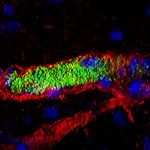Lien vers Pubmed [PMID] – 38294351
Lien DOI – 10.1021/acs.analchem.3c04682
Anal Chem 2024 Feb; 96(6): 2506-2513
Cross-linking mass spectrometry (XL-MS) has become a very useful tool for studying protein complexes and interactions in living systems. It enables the investigation of many large and dynamic assemblies in their native state, providing an unbiased view of their protein interactions and restraints for integrative modeling. More researchers are turning toward trying XL-MS to probe their complexes of interest, especially in their native environments. However, due to the presence of other potentially higher abundant proteins, sufficient cross-links on a system of interest may not be reached to achieve satisfactory structural and interaction information. There are currently no rules for predicting whether XL-MS experiments are likely to work or not; in other words, if a protein complex of interest will lead to useful XL-MS data. Here, we show that a simple iBAQ (intensity-based absolute quantification) analysis performed from trypsin digest data can provide a good understanding of whether proteins of interest are abundant enough to achieve successful cross-linking data. Comparing our findings to large-scale data on diverse systems from several other groups, we show that proteins of interest should be at least in the top 20% abundance range to expect more than one cross-link found per protein. We foresee that this guideline is a good starting point for researchers who would like to use XL-MS to study their protein of interest and help ensure a successful cross-linking experiment from the beginning. Data are available via ProteomeXchange with identifier PXD045792.





